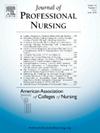美国护理学院协会基于能力的护理教育的基本原则和益处与芬克分类法的比较
IF 2.8
3区 医学
Q1 NURSING
引用次数: 0
摘要
一个多世纪以来,布鲁姆分层分类法一直是编写护理专业课程和课程目标的黄金标准。以展示护理能力为成果的课程和教学大纲的开发需要更强大的分类法。美国护理学院协会(AACN)的《要点》:专业护理教育的核心能力》要求护理专业学生在自信领导、围绕适应模糊性和变化的个人发展以及专业终身学习方面达到能力要求。本次回顾的目的是比较芬克的分类法与 AACN 的基本原则以及能力本位教育的益处。总之,芬克的重要学习经验分类法提供了一个综合框架,以满足基础知识、应用和整合知识的能力要求。此外,芬克的分类法还包括护理教育中所需的其他学习领域,如学习如何学习、领导力和人际交往技能,如学习的人文维度、关心学习和适应变化的能力。教育者应考虑护理实践中的各种学习,并应重新考虑使用分层和以内容为中心的教学方法,仅在认知层面编写学习目标。本文章由计算机程序翻译,如有差异,请以英文原文为准。
A comparison of the American Association of Colleges of Nursing's basic principles and benefits of competency-based nursing education and Fink's taxonomy
For over a century, Bloom's hierarchical taxonomy has been the gold standard for writing objectives for curricula and courses in programs of nursing. Development of courses and curricula with demonstration of nursing competencies as the outcome requires a more robust taxonomy. The American Association of Colleges of Nursing (AACN) The Essentials: Core Competencies for Professional Nursing Education requires nursing students to meet competencies in assertive leadership, personal development around adapting to ambiguity and change, and professional life-long learning. The purpose of this review was to compare Fink's taxonomy with the AACN basic principles and benefits of competency-based education. In conclusion, Fink's taxonomy of significant learning experiences provides an integrative framework to meet competencies of foundational knowledge, application, and integration of knowledge. Moreover, Fink's taxonomy includes additional areas of learning needed in nursing education such as learning how to learn, leadership and interpersonal skills such as in a human dimension of learning, caring about learning, and the ability to adapt to change. Educators should consider all kinds of learning for nursing practice and should reconsider the use of a hierarchical and content-centered teaching approach, with learning objectives written only at the cognitive level.
求助全文
通过发布文献求助,成功后即可免费获取论文全文。
去求助
来源期刊
CiteScore
4.80
自引率
8.00%
发文量
153
审稿时长
52 days
期刊介绍:
The Journal will accept articles that focus on baccalaureate and higher degree nursing education, educational research, policy related to education, and education and practice partnerships. Reports of original work, research, reviews, insightful descriptions, and policy papers focusing on baccalaureate and graduate nursing education will be published.

 求助内容:
求助内容: 应助结果提醒方式:
应助结果提醒方式:


